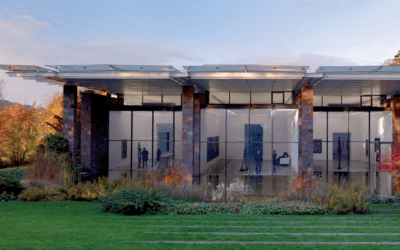From primary to secondary prevention for cardiovascular risks
Our arteries age the same as us. There are two factors, the first one being the composition of the vessel wall while the second one being time. However, we have ways of preventing cardiovascular risks. They’re split into two groups, primary and secondary prevention. Primary prevention consists of reducing the stress that affects the vascular wall of arteries. That would include regular exercise, a healthy diet, being in a smoke-free zone and more. Secondary prevention consists of avoiding a relapse of arterial disease. Having suffered from a vascular issue means our reserve capacity is exhausted. This further means that we should have follow-up care even after a procedure that treated an arterial lesion.
Want to learn more? Keep reading the article by Dr. Remi Chamberod.
Life before and after illness… Our ageing is the product of time and stress to which our organism is exposed. Our resistance to ageing is closely linked to the term reserve capacity. This is the remaining capacity our organism has to function symptom-free. When this reserve is exhausted, the part of the organ that is still functioning can no longer do its job adequately; that is the moment when symptoms appear.
Take, for example, arteriopathy of the lower limbs: the increasing overload of the vessel walls due to atheromatous changes leads to successive phases of development. This coating of our arteries consists of numerous substances. Some of these substances are due to vascular inflammation, but they are mainly calcium and cholesterol crystals. Gradually, our arterial reserve diminishes as the disease progresses.
HOW DO OUR ARTERIES AGE?
- The first factor is the composition of the vessel wall. It consists of proteins of better or poorer quality. The quality of these proteins, which make up the various coatings of the arterial walls (collagen, elastin, fibronectin), depends on our genetic material. Heredity therefore plays a major role in the development of the disease.
- The second factor is time, which affects us all. However, time has the coefficient of stress, because at each moment each of our functions is subjected to a different load. The pressure in the arteries increases the stress on the elasticity and the friction of the blood on the walls of the vessels. The corrosion of the blood is the higher because it is rich in highly reactive molecules, such as sugar (in diabetes), alcohol, and to a lesser extent fats, but also in toxic molecules produced by certain metabolic processes (free radicals, glycation products) or the result of inhaling combustion products such as tobacco or air pollution.
HOW DO THESE SUBSTANCES WORK?
These various factors produce chronic inflammation of the vascular walls, which accelerates the ageing process: time is thus multiplied. The inflammation promotes the penetration of cholesterol and calcium into the vascular wall. In this situation, the more transport proteins for cholesterol are saturated in the blood (LDL cholesterol), the more cholesterol is released from the transport protein to adhere to the wall of the inflamed artery. Above a certain concentration, cholesterol and calcium form crystals and from them atheroma platelets. At this stage, it is still a cosmetic problem because the blood can flow around the obstruction. Our reserve is hardly affected and we are in the phase of primary prevention (symptom-free). Measurements of the biological values and the thickness of the vessel wall clarify stress levels and inflammations that have a detrimental effect.
The atheroma platelet grows over time x stress, taking away the available space in the artery for blood circulation, and gnawing away at our “functional reserve”. When a level is exceeded (70% reduction in flow in most arteries), the remaining arterial diameter is no longer sufficient to ensure blood flow to the leg muscles in all situations. During exertion, when the muscles need more energy (oxygen, sugars and fats) to function, insufficient energy supply causes the inability of the muscle to continue: a cramp develops. The symptoms are painful and one is in secondary prevention, whose objective is to slow down the progress of the disease or to avoid a relapse after treatment.
During exertion, when muscles need more energy to function, insufficient energy supply causes the inability of the muscle to continue: a cramp occurs.
WHAT OPTIONS DOES PRIMARY PREVENTION OFFER?
In primary prevention, in symptom-free subjects, the priority is to reduce stress that affects the vascular walls of the arteries:
● Regular exercise reduces excess energy (less overweight, less
● diabetes, less cholesterol and triglycerides) and balances blood pressure.
● Breathe clean air free of cigarettes, exhaust fumes and industrial fumes to limit the toxicity of these pollutants to our vascular walls.
Putting oneself on a healthy diet, varied and balanced, inspired by the Crete diet (raw vegetables, dried fruits, fish, less meat and dairy products, (a) little wine), this contributes to a balance between energy intake and combustion, and thus to a balance between lean and fat body mass and (correct) weight. This type of diet covers our nutritional needs in their diversity, without toxins that accelerate the ageing process, reduce our functional reserves or put our “health chapter” at risk.
WHICH DRUG TREATMENT IS SUITABLE FOR PRIMARY PREVENTION?
● Fiercely contested in recent decades, medicines for people classified as not ill are an important economic factor for the industry. However, they are also a response to our demand to maintain our health and to practice primary prevention: Who wants to wait until they get sick when they can postpone until they get sick?
● Medication does not in any way challenge a healthy lifestyle but can complement it. Medicines treat risk factors: neither high blood pressure, nor cholesterol, or to a lesser extent, diabetes, are diseases in themselves. Patients very rarely die directly from these conditions, but indirectly, resulting complications are the leading causes of death in the world. Epidemiological studies show that correcting these risk factors protects our health capital and preserves our arterial reserve. Complications such as strokes and especially heart attacks are thus postponed. The protective effect of medications (antihypertensive drugs of all categories, statins against cholesterol, diabetes drugs, or antiplatelet drugs) cannot be predicted in a symptom-free individual. It can only be estimated by carefully gathering all the information about the patient: those at highest risk have the most benefit from comprehensive therapeutics. Screening for primary prevention is the pivotal point of the medical project “anti-ageing”.
● The polemic about medicating an entire population, in terms of primary prevention, is understandable, but also emphasises the need to better match medical interventions in a population that feels comfortable and actually just wants to withstand the ravages of time.
● Two other parameters need to be considered: Tolerability and safety. The drug should have proportionate side effects in relation to its objective. It is not justifiable for a healthy person to suffer side effects for a minimal or uncertain improvement in his or her life over the next 30 years. On the other hand, if one starts treatment at 45, the long-term effects must be known.
WHAT ARE THE OPTIONS FOR SECONDARY PREVENTION?
In secondary prevention, it is absolutely essential to avoid a relapse of arterial disease: having suffered from a vascular complication means that our reserve capacity is exhausted, a momentous loss of the safety factor.
- Follow-up care must be careful and sustained, even after a procedure that has treated an arterial lesion. Surgery often only “repairs” the worst affected part of our arteries. A symptomatic lesion in the coronary arteries (the arteries of the heart), the cephalic and carotid arteries (the arteries of the brain) or the leg arteries, makes it necessary to examine the other arterial sectors where the conditions for the development of an atheroma are the same (tobacco, hypertension, hyperlipidaemia, diabetes, hereditary factors, lack of exercise…).
- Ideally, prevention should slow down the ageing process of the arteries. Of course, we cannot stop time, but optimal treatment of cardiovascular risk factors is crucial: as with primary prevention, a balanced diet, exercise and avoidance of harmful stimulants (mainly tobacco or alcohol) is strongly advised.
- As far as medication use is concerned, there is less hesitation in secondary prevention: cholesterol levels must be as low as possible, hypertension strictly normalised and diabetes balanced to hopefully stop the progression of untreated lesions. It is unthinkable to treat all arterial lesions with stents, the risk is too high that there will be complications during the insertion and that the artery will close if the drug treatment is not optimal.
Adhering to a healthy lifestyle from an early age will optimally take care of health capital and maintain reserve capacities. As life expectancy increases, it is essential to maintain our functions and ensure a good quality of life with better autonomy. Screening now makes it possible to assess our health capital and reserve capacities with relative precision: so the best strategies for care and risk reduction can be designed. At any time, the past is analysed, the current situation is examined to prepare for the future. Even with a lush medical history and battered reserves, an intervention with a preventive goal can make a big difference in the future.
Adhering to a healthy lifestyle from an early age will take optimal care of health capital and maintain reserve capacity.










